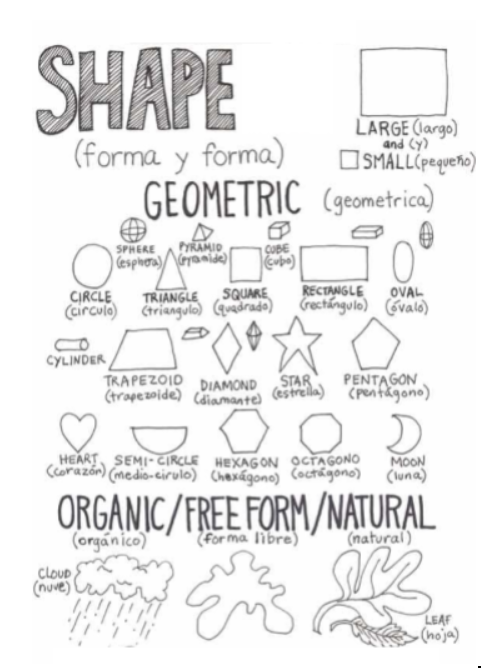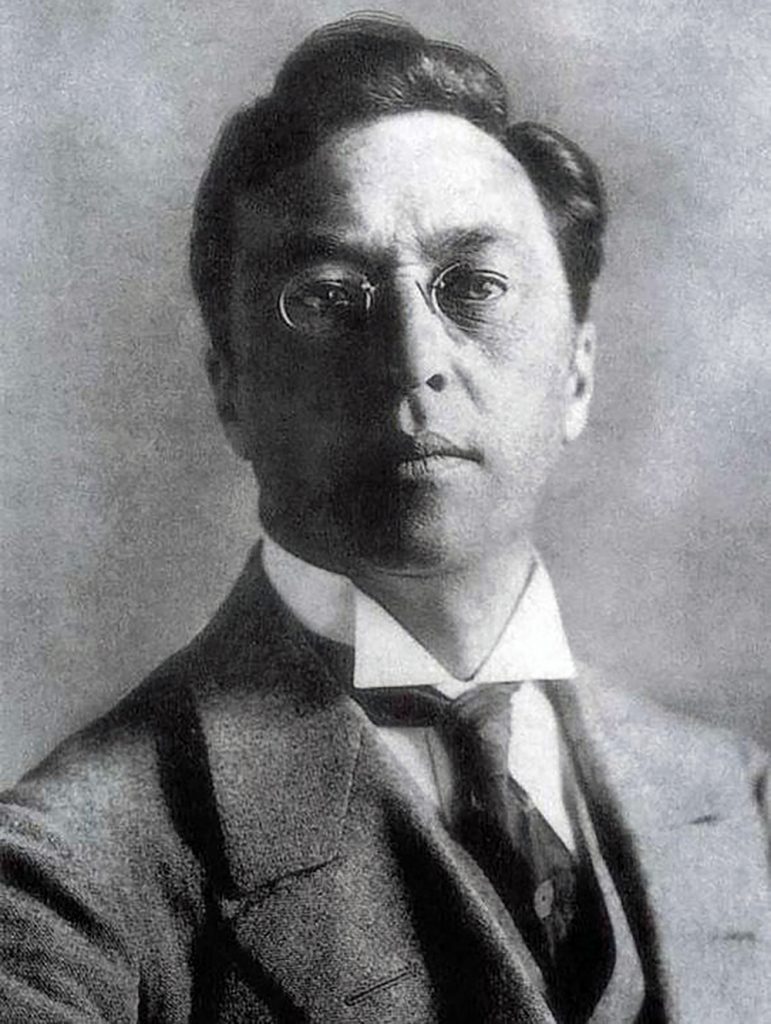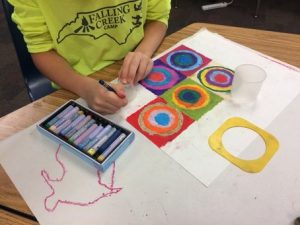Shape
Everywhere we look we see shapes – they are all around us! In art, shape is defined as an enclosed space with length and width; a flat area surrounded by an outline. Artists use all kinds of different shapes. As an element of art, shapes fall into two categories: geometric and organic or free form.
Geometric shapes are easy to recognize. They are mathematical shapes with names attached to them like squares, circles, and triangles. Geometric shapes can be simple or complex and give a piece of art a sense of order.
Unlike geometric shapes, organic and free flow are shapes that seem to not follow any rules. They are often irregular, uneven, and one of a kind. These shapes may be found in nature like clouds, leaves, or fruit, or they may be made-up. Organic and free flow shapes tend to add a natural feeling and give a piece of artwork a sense of flow.
Artist: Wassily Kandinsky
Wassily Kandinsky was an artist with a passion for shape and colour. He was born in Russia and grew up in Odesa (Ukraine) where he enjoyed creating art and playing the cello and piano. As a young adult, he attended law school which led to a successful career. When Kandinsky was 30, his love of art and music drew him away from practising law and he took steps to pursue a career as an artist. He moved to Munich, Germany and attended art school.
In time, Kandinsky began to move away from traditional forms of art and began to think about art in different ways. He adopted the idea that colour and shape, as mediums for expressing feelings and his passion for music, could stand alone as the subject of great art. Kandinsky was interested in studying the interaction of different combinations of colours and shapes. The shapes he was most interested in were triangles, squares, and circles. Kandinsky believed that triangles could evoke feelings of aggression, squares a sense of calm, and circles spirituality. For more examples of Kandinsky’s art, follow this link: https://www.wassilykandinsky.net/painting1896-1944.php
Kandinsky’s Style and Technique
Kandinsky is considered one of the founding fathers of abstract art. He painted with a wide range of materials including watercolour, oil, water, tempera, and gouache and is widely known for his use of vivid colours. Kandinsky painted on many different surfaces such as canvas, glass, and plywood.
The techniques he employed in the creation of Squares with Concentric Circles was the use of broad, loose brushstrokes, colour blending, and the selection and combination of different bright colours.
Squares with Concentric Circles
Kandinsky created this piece, Squares with Concentric Circles, in 1913. It is currently hanging at the at Städtische Galerie im Lenbachhaus in Munich, Germany.
This piece was created using a form of watercolour that Kandinsky made with gouache and crayon. He created a grid composition of squares, each enclosing a series of circles within circles.
Click through the slide show to see more art by Kandinsky.
Now it’s your turn to be inspired!
As you can see from Squares with Concentric Circles, Kandinsky loved working with shape and this piece in particular, with circles within circles. That is the meaning of concentric: a circle within a circle! In fact, like many great artists, Kandinsky brought together two elements of art, shape and colour, to create this simple yet dramatic masterpiece.
It is a lot of fun to create a Kandinsky inspired piece of art. Give it a try! You will need a piece of 11 X 11 paper and oil pastels. Watch this video and follow these simple steps:
- Fold your paper four times so that when you open it you have 16 squares
- Complete one square at a time by starting with a solid coloured circle and building circles around it
- Use a white or peach pastel to blend colours as needed. Think of the pastels like paint sticks: blending is key to achieving Kandinsky’s technique
- Use a separate piece of white paper to clean the tips of the pastels
The Städtische Gallery in Lenbachhaus
Luisenstraße 33, 80333 München, Germany
Exhibit your Kandinsky Inspired Art!
Can you imagine seeing your work displayed in an actual museum? Well here is your chance! Virtually hang your artwork, alongside Kandinsky’s Squares with Concentric Circles at the Städtische Gallery!
Follow the directions below to add your masterpiece to the map:
- Click on the ‘Seven Elements of Art Form’ link below.
- Select one of the seven categories
- Upload a picture of your art as the “featured image”.
- Under Post Title: put your First Name and Grade (Louise, Grade 5).
- Copy and paste the gallery address above to the Location field.
- For the Post Content section, answer any questions that were asked within the lesson, or tell us a bit about what inspired you to create your art and how you created it!
- Click Submit to drop your pin in the map so that others can view your art at the gallery.



